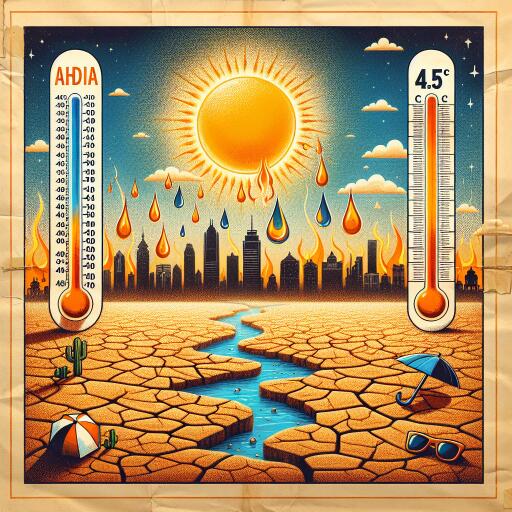
Ahmedabad Battles Record-Breaking Heatwave with Temperatures Soaring to 44.5°C
In a fierce testament to escalating climate challenges, Ahmedabad faced an unprecedented surge in temperature, reaching a blistering 44.5°C. This new high, recorded on a sweltering Saturday, overtook the previous day’s peak to become the hottest day this summer. According to the India Meteorological Department (IMD), these temperatures soared a significant 2.5 degrees above the expected norms for this season, with night-time lows hardly offering any reprieve at 3.3 degrees above the usual, settling at 30.8°C.
The forecast doesn’t promise any relief, with similar temperatures predicted to continue. In a regional context, Surendranagar eclipsed Ahmedabad, albeit marginally, documenting a maximum of 45.5°C.
In the midst of this heatwave, a compelling study emerges from the academic corridors of CEPT University, offering insights into the urban heat island effect exacerbated by city planning and architecture. Spearheaded by Aditya S Deshmukh, a master’s student, the research sheds light on how microclimates within the city are significantly warmer due to the built environment. Titled “Managing Urban Heat Stress Through Urban Planning and Design Measures”, this study navigates through the complexities of urban heat and proposes strategic mitigation strategies.
Deshmukh, under the mentorship of Prof Saswat Bandopadhyay, embarked on a meticulous analysis, pinpointing areas like Gota, Naroda GIDC, Science City, the airport area, and Sarkhej as heat hotspots. Relying on a blend of satellite imagery and on-site temperature readings, the research ventured into the realms of how land usage and local climate zones interact with urban heat phenomena. “We aimed to curate a local climate zone map tailored for Ahmedabad by dissecting microclimates across different urban layouts,” Deshmukh elucidates.
The study’s discoveries reveal an urban landscape grappling with heat. Surfaces marred by roads, streets, and unoccupied land emerged as key contributors to the city’s elevated temperatures. In contrast, areas amidst open high-rise buildings witnessed somewhat more tolerable conditions, attributed to better air circulation and possibly more generous shading. Conversely, densely packed low-rise settlements bore the brunt of heat, showcasing significant increases in rooftop temperatures. The infrastructure such as warehouses and railway stations also recorded some of the highest surface temperatures within the city precincts.
Prof Bandopadhyay voices a crucial call to action, emphasizing the indispensable role of urban planning in cooling our cities. “Adapting our urban landscapes through thoughtful planning at the town planning level can substantially alleviate the heat. Strategies including augmenting green cover, intelligently designing road layouts, and regulating building heights are vital,” he asserts.
The need for a paradigm shift in urban design principles is more acute than ever, with experts advocating for the adoption and implementation of global best practices to counter urban heat stress. In cities like Ahmedabad, where temperatures are setting new records, integrating these practices could mean the difference between sweltering discomfort and sustainable livability.





Leave a Reply